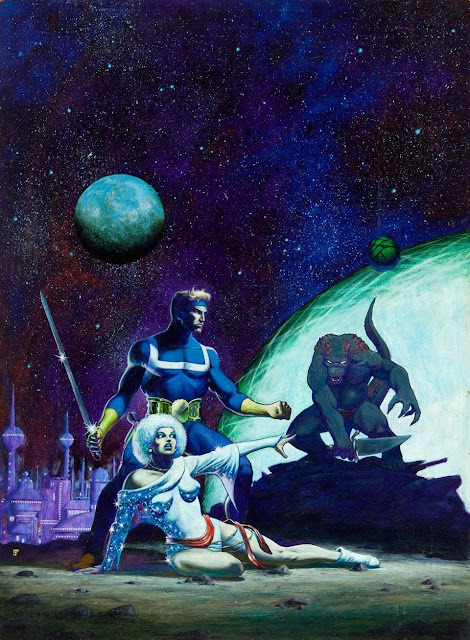#jim starlin
Explore tagged Tumblr posts
Text

Silver Surfer by Jim Starlin
1K notes
·
View notes
Text

Mar-Vell of the Kree, Captain Marvel, by Jim Starlin.
138 notes
·
View notes
Text
Tim Drake is so funny to me as an Icon because Starlin wanted to kill the idea of child sidekicks,of Robin as a light. He wanted to kill the hope and joy of him. Wanted to slaughter the importance and responsibility of having someone relying on you,of having a child to come home to. And he was allowed to kill Jason,was allowed to kill Robin and then not even a year later Wolfman went "Here's a Robin so in love with the idea and responsibility of Robin that Dick Grayson imprinted himself on his brain and Tim hasn't stopped thinking about it since." And he became the Robin that can't stop being Robin and LMAO fuck you Jim Starlin,I'm glad you're here to see it.
#dc#dc batman#batman#jason todd#tim drake#bruce wayne#dick grayson#comics#a lonely place of dying#death in the family#jim starlin#marv wolfman#robin jason todd#dc robin#batman and robin#dc comics#comic books#robin tim drake#robin
719 notes
·
View notes
Text



1982's The Death of Captain Marvel Vol. 1 #1 cover by Jim Starlin and Steve Oliff (based on Michelangelo's famous Pieta sculpture).
#The Death of Captain Marvel#Jim Starlin#art#Death#Captain Mar-Vell#Captain Marvel#Wolverine#Daredevil#The Thing#Thor#Spider-Man#Captain America#Dr Strange#Iron Man#Hulk#Colossus#comics#cover#marvel#marvel comics#80s#1982#80s comics#graphic novel#pieta#michelangelo buonarroti#fallen hero#1980s#Jim Starlin's The Death of Captain Marvel#Steve Oliff
107 notes
·
View notes
Text
I think I'm honestly tired of the happy vs angry Robin debate with Jason Todd especially because there really wasn't a Jason before his death. Now, now, lower those pitchforks. Let me explain with 4 simple words: Crisis on Infinite Earth. Okay, let me actually explain now. Jason wasn't really re-introduced until June 1987 in Batman #608 when he got his updated origin and because of that a majority of his post-crisis stories are still working with his pre-crisis characterization. Collins fundamentally changed Jason, but that version never got the chance to stick before Starlin who hated Jason came in, took over, and then killed him off. The Detective Comics writers didn't seem to get the memo of "hey, he's a scrappy street kid now" and for the 3 stories in between June 1987 and November 1988 he is still pre-crisis in personality.
Honestly, long of the short of it: characterize Jason as Robin however you want.
#personally I mainly look at Collins for how i characterize him because there's a lot of potential in that version#tldr: fighting about Jason's charactization as Robin is stupid because there's vastly different versions#jason todd#red hood#jim starlin#post-crisis#pre-crisis#batfamily#batman comics#dc characters#dc comics#hot take#dc robin#detective comics
57 notes
·
View notes
Text

Cosmic Odyssey No. 1 (of 4), 1988. By Jim Starlin, Mike Mignola, Carlos Garzon and Steve Oliff. DC Comics.

61 notes
·
View notes
Text

Batman: The Cult miniseries house ad (circa July 1988)
#Batman: the cult#Batman#bruce wayne#cult#uh oh#gotham#house ads#jim starlin#bernie wrightson#dc comics#comics#80s comics
56 notes
·
View notes
Text
And then, there is Jason.

Batman: The Cult
#dc comics#batman#dc#bruce wayne#comic books#robin#jason todd#the cult#jim starlin#lets party#look at those short shorts
49 notes
·
View notes
Text

Batman #416 (1988) by Jim Aparo & Jim Starlin
#robin#dick grayson#teen titans#kid flash#wally west#wallace west#donna troy#wonder girl#wondergirl#jim aparo#batman#jim starlin#dc comics#dc#80s comics#80s#comics
85 notes
·
View notes
Text

#Infinity Watch#Adam Warlock#X-Men#Wolverine#Avengers#Captain America#She-Hulk#Quasar#Daredevil#Hawkeye#Vision#Fantastic Four#Mr. Fantastic#Jean Grey#Black Knight#Archangel#Spider-Man#Gamora#Silver Surfer#Quicksilver#Jim Starlin#Ron Lim#Infinity War#team shots
78 notes
·
View notes
Text










Marvel Graphic Novel 1 (1982) The Death of Captain Marvel by Jim Starlin
Cover: Jim Starlin
#Marvel Graphic Novel#Captain Marvel#Kree#Yon Rogg#Eon#Mentor#Starfox#Thanos#Supreme Intelligence#Avengers#Jim Starlin
32 notes
·
View notes
Text

Conan The Barbarian by Jim Starlin
162 notes
·
View notes
Text

Dreadstar No. 11: Origin!
by Jim Starlin
#comics#comic books#art#illustration#panelswithoutpeople#Dreadstar#Jim Starlin#archie goodwin#jim novak#christie scheele#epic comics#marvel#marvel comics#domed city#city#sci-fi#scifi#science fiction
30 notes
·
View notes
Text

Starlord by Jim Starlin
179 notes
·
View notes
Text




Jim Starlin's The Death of Captain Marvel Trade Paperback Cover (1994).
#The Death of Captain Marvel#Jim Starlin#art#cover#comics#marvel#marvel comics#1990s#cool comic art#cool cover art#Captain Marvel#Captain Mar-Vell#rest in peace#Wolverine#Hulk#Iron Man#Daredevil#Drax the destroyer#Mr Fantastic#Thor#Doctor Strange#Captain America#The Thing#Spider-Man#trade paperback#TPB#grieving#fallen hero#Jim Starlin's The Death of Captain Marvel#funeral for a friend
146 notes
·
View notes
Text

Thanos vs Galactus
#thanos#the mad titan#galan#galactus#galacta#alberto navajo#illustration#marvel#comic art#janf#marvel comics#marvel universe#marvel cinematic universe#mcu#fantastic4#fantastic four#marvel villains#the avengers#avengers endgame#avengers infinity war#josh brolin#commission#comic#winsor and newton#copic markers#cosmic cube#jim starlin#jack kirby
30 notes
·
View notes